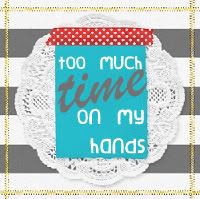It is that time of the year when we are overwhelmed by manufacturers' toy advertising. Knowing how to spot non-toxic products is a must, as well as having access to a governmental list of recalled toys. Playing safe is the best strategy when buying toys.
Here are few things to keep in mind:
1) Checking recycling code labels on plastic toys can tell you what chemicals the plastic contains, and therefore which toys to avoid. And some plastics are more readily recyclable than others.
To locate these codes, look for a single number surrounded by three chasing arrows that form a triangle, usually on the bottom of a plastic product. Here are the seven codes, as provided by the American Chemistry Council:
- Resin code 1: PET: Polyethylene Terephthalate, nicknamed polyester
- Resin code 2: HDPE: High Density Polyethylene
- Resin code 3: PVC: Polyvinyl Chloride, also called vinyl
- Resin code 4: LDPE: Low Density Polyethylene
- Resin code 5: PP: Polypropylene
- Resin code 6: PS: Polystryene
- Resin code 7: OTHER: This code is used to label products made with a resin not already categorized, or a combination of the resins listed above.
The World Health Organization and The National Toxicology Program have stated that vinyl chloride is a carcinogen, and studies have shown that they may cause reproductive problems. Phthalates in PVC can damage the liver, kidneys, lungs, and reproductive system, particularly the developing testes, according to animal studies. In fact, Europe banned phthalates in plastic toys in 2005, citing the toxic chemicals’ carcinogenic, mutagenic, and reprotoxic effects. Lead, which is added to PVC, causes nerve damage.
Bisphenol A (BPA), used in polycarbonate plastic, has been linked to hormone disruption in rats, to increased certain types of cancer. Other studies have found that bisphenol A can lead to attention disorders, behavior alterations, disrupted insulin regulation, among other problems.
Also, avoid buying brightly colored plastic toys. They likely contain toxic paint, and infants tend to put them in their mouth.
2) Wooden toys are usually safer. Any solid wood is preferable to pressed woods, such as plywood and particleboard, which are formed with glues that give off toxins including formaldehyde, a known carcinogen. You can often see layers of pressed wood if you look at the edges of toys and puzzle pieces. Solid wood doesn't require the use of toxic chemicals that pressed woods and PVC do. And solid wood doesn't consume petroleum—a non-renewable resource—the way that plastics do. Wooden toys made with nontoxic paints and finishes also use and release fewer toxins. Beeswax and natural oil finishes, such as linseed and walnut oils, are safest. Since certified sustainable wood is rare right now, consider solid wood toys that are either unfinished or those that are finished with non-toxic substances. You can also look for toys made from recycled wood.
3) Organic cotton is a great option! Stain- and moth-proofed cotton, synthetics, and wool used in stuffed and soft fabric toys can contain azo dyes, which can be carcinogenic. And cotton crops account for one quarter of the insecticide use worldwide. Be sure that the cotton toys you buy are made from certified organic and/or untreated cotton and wool colored with nontoxic colorfast dyes.
4) Avoid buying costume jewelry. It has been subject of several recalls lately because of the highly toxic cadmium.
5) Make sure you check the list provided by the US Consumer Product Safety Commission for recalled toys
Toy Hazard Recall List
Sources: babyzone , greenyour, CPSC
















No comments:
Post a Comment